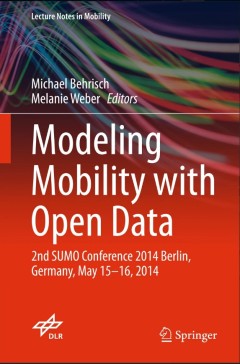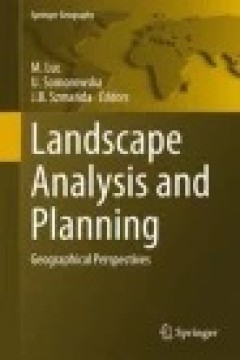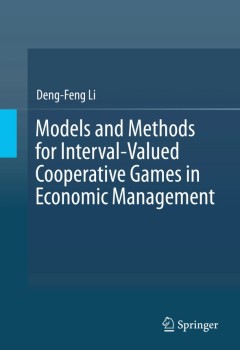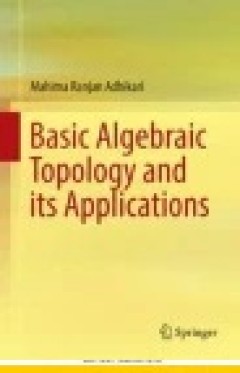Filter by

Educating for Sustainability in Primary Schools
Education for Sustainability is a key priority in today’s schools, as our society seeks to find a balance between environmental, social, cultural, political and economic imperatives that affect our future. As young children will become the next generation of adults, it is vital that they are educated about sustainability issues, so that they can learn to make informed decisions and take posit…
- Edition
- 1
- ISBN/ISSN
- 978-94-6300-046-8
- Collation
- -
- Series Title
- -
- Call Number
- X, 370

Edge-to-Edge Mitral Repair
This is the first comprehensive review of the edge-to-edge technique for mitral repair, which was introduced into the surgical armamentarium in 1991 by one of the authors, Ottavio Alfieri. The surgical technique employed in edge-to-edge repair today provides the basis for the only reliable method of percutaneous correction of degenerative mitral regurgitation. The book traces the evolution of t…
- Edition
- 1
- ISBN/ISSN
- 978-3-319-19892-7
- Collation
- -
- Series Title
- 28 b/w illustrations, 66 illustrations in colour
- Call Number
- VIII, 166

Teaching And Learning Like A Feminist
Teaching and learning like a feminist is a playful, sophisticated and creative theoretical and pedagogical story about feminist academics in the contemporary university This book is a love story about teaching and learning like a feminist in higher education Teaching and learning like a feminist is a creative and serious autoethnography which brings to life the experiences of feminist aca…
- Edition
- -
- ISBN/ISSN
- 978-94-6300-678-1
- Collation
- -
- Series Title
- -
- Call Number
- -

Modeling Mobility with Open Data: 2nd SUMO Conference 2014 Berlin, Germany, M…
This contributed volume contains the conference proceedings of the Simulation of Urban Mobility (SUMO) conference 2014, Berlin. The included research papers cover a wide range of topics in traffic planning and simulation, including open data, vehicular communication, e-mobility, urban mobility, multimodal traffic as well as usage approaches. The target audience primarily comprises researchers a…
- Edition
- 1
- ISBN/ISSN
- 978-3-319-36573-2
- Collation
- X
- Series Title
- Lecture Notes in Mobility
- Call Number
- -

Landscape Analysis and Planning: Geographical Perspectives
This book presents recent advances in landscape analysis and landscape planning based on selected studies conducted in different parts of Europe. Included are methodological problems and case studies presented and discussed during scientific sessions organized by the Commission of Landscape Analysis and Landscape Planning of the International Geographical Union (IGU) within the framework of the…
- Edition
- -
- ISBN/ISSN
- 978-3-319-13527-4
- Collation
- -
- Series Title
- -
- Call Number
- -

Models and Methods for Interval-Valued Cooperative Games in Economic Management
This book proposes several commonly used interval-valued solution concepts of interval-valued cooperative games with transferable utility. It thoroughly investigates these solutions, thereby establishing the properties, models, methods, and applications. The first chapter proposes the interval-valued least square solutions and quadratic programming models, methods, and properties. Next, the sat…
- Edition
- 1
- ISBN/ISSN
- 978-3-319-28996-0
- Collation
- XVII, 137
- Series Title
- -
- Call Number
- -

Everyday Knowledge, Education and Sustainable Futures Transdisciplinary Appr…
Everyday knowledge offers opportunities for better understanding of significant issues of our times. Reflecting these themes this book places emphasis on community wisdom. The underpinning argument is that our instinctive urge for survival may not be enough if we do not share our collective knowledge and learn more about the everyday habits, beliefs and actions of communities spread across the …
- Edition
- -
- ISBN/ISSN
- 978-981-10-0216-8
- Collation
- 4 b/w illustrations, 12 illustrations in colour
- Series Title
- -
- Call Number
- -

Basic Algebraic Topology and its Applications
This book provides an accessible introduction to algebraic topology, a field at the intersection of topology, geometry and algebra, together with its applications. Moreover, it covers several related topics that are in fact important in the overall scheme of algebraic topology. Comprising eighteen chapters and two appendices, the book integrates various concepts of algebraic topology, supporte…
- Edition
- -
- ISBN/ISSN
- 978-81-322-2843-1
- Collation
- XXIX, 615
- Series Title
- -
- Call Number
- 515.14

Treatment of Chronic Pain by Integrative Approaches
From reviews of Deer, eds., Comprehensive Treatment of Chronic Pain by Medical, Interventional, and Integrative Approaches: "Comprehensive Treatment of Chronic Pain by Medical, Interventional, and Integrative Approaches is a major textbook... [I]t should be a part of all departmental libraries and in the reference collection of pain fellows and pain practitioners. In fact, this text could be …
- Edition
- 1
- ISBN/ISSN
- 978-1-4939-1820-1
- Collation
- XIX, 325
- Series Title
- -
- Call Number
- -

Evaluation Method of Energy Consumption in Logistic Warehouse Systems
This book focuses on guidelines for reducing the energy consumption in warehousing processes. It presents a model of formal assessment for energy consumption in the context of storage-system logistics, as well as a computational model consisting of three sub-models: energy consumption models for forklifts and stacker cranes, respectively, and an energy intensity model for roller conveyors. The …
- Edition
- -
- ISBN/ISSN
- 978-3-319-22044-4
- Collation
- 19 b/w illustrations, 26 illustrations in colour
- Series Title
- -
- Call Number
- -
 Computer Science, Information & General Works
Computer Science, Information & General Works  Philosophy & Psychology
Philosophy & Psychology  Religion
Religion  Social Sciences
Social Sciences  Language
Language  Pure Science
Pure Science  Applied Sciences
Applied Sciences  Art & Recreation
Art & Recreation  Literature
Literature  History & Geography
History & Geography